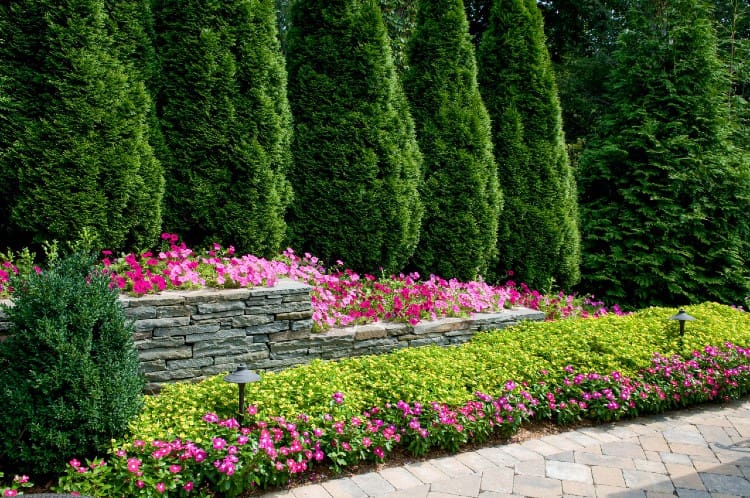As a homeowner looking to enhance my landscape I’ve learned that timing is everything when it comes to planting new shrubs. Choosing the right time of year to add these woody plants can mean the difference between thriving bushes or shriveled failures. So when exactly should we plant to ensure our shrubs become established and transform our yards into verdant oases?
In this article, I’ll share tips on determining the best seasons and months for planting various shrubs in your region Follow these guidelines to schedule your landscaping project for success
Why Fall is Ideal for Planting Most Shrubs
For a majority of shrub varieties, autumn is the prime planting time. Here’s why:
-
Cooler temperatures reduce transplant shock and stress on plants.
-
Less foliage and no flowers allows the shrub to direct energy to root growth rather than top growth.
-
Plants are entering dormancy, so reduced water needs aid root development.
-
Fall rains provide the moisture levels ideal for establishing new roots before winter.
-
Roots develop well in the still-warm soil and can continue growing until the ground freezes.
-
New shrubs have time to settle in before spring growth and summer heat arrive.
Aim to plant shrubs in fall around 6-8 weeks before your first expected frost.
Good Choices for Fall Shrub Planting
Many popular shrubs do best when planted in autumn, including:
-
Flowering shrubs like hydrangeas, lilacs, and roses
-
Evergreen shrubs including boxwood, holly, yew, and juniper
-
Fruit shrubs such as blueberry and currant bushes
-
Ornamental shrubs like spirea, potentilla, and viburnum
Prioritize planting these in the fall months for optimal growth.
Spring Planting Considerations
While fall is ideal for most shrubs, spring can also be a good planting time for certain varieties including:
-
Flowering shrubs that bloom in summer or fall, giving them time to establish roots before flowering.
-
Container-grown shrubs that have intact root balls and can be planted later into spring.
-
Smaller, less mature shrubs that require less time to settle roots before summer.
Aim to plant spring shrubs 4-6 weeks before summer heat ramps up in your area. Avoid late spring planting.
Tips for Summer and Winter Shrub Planting
Summer and winter are not preferred times for planting shrubs, but it can be done with extra care:
-
Ensure shrubs are amply watered – never allow roots to dry out.
-
Plant in morning or evening when temperatures are lower.
-
Construct shade coverings to protect from intense sun and wind.
-
Wrap or insulate shrubs to conserve warmth in winter.
-
Cut back on pruning at planting to reduce stress on the shrub.
While possible, shrub survival rates are lower when planting in summer or winter.
Prepping Your Planting Site for Success
No matter when you plan to plant, proper soil preparation is key:
-
Conduct soil tests to determine pH and nutrient levels. Adjust as needed.
-
Till compost thoroughly into beds to enrich soil.
-
Improve drainage by amending clay soils with compost.
-
Allow beds to settle 2-3 weeks before planting.
-
Water beds prior to planting so soil is moist but not soggy.
Taking the time to create optimal soil conditions will give your new shrubs a leg up on thriving.
Following Best Practices for Planting Shrubs
Use these best practices when planting shrubs for the highest success rate:
-
Dig a hole 2-3 times wider than the root ball or container.
-
Carefully remove the shrub from its pot without disturbing roots.
-
Set the shrub in the hole so the top of root ball is level with the ground.
-
Backfill hole with native soil, firming it gently around roots.
-
Water deeply until soil is saturated.
-
Apply 2-4 inches of organic mulch around the base.
-
Stake large or top-heavy shrubs to stabilize in wind.
Adhering to these proper planting techniques will give your new shrubs the healthy start they need to establish quickly.
Providing Care After Planting Shrubs
Post-planting care is crucial as shrubs develop their root systems:
-
Water thoroughly 1-2 times per week for the first season.
-
Re-apply mulch as needed to retain moisture and suppress weeds.
-
Prune lightly right after planting, then wait a full season for shaping.
-
Monitor for pests like aphids or diseases like powdery mildew.
-
Hold off on fertilizing until shrubs show signs of growth in spring.
With attentive early care, your newly planted shrubs will flourish into the beautiful additions you envisioned for your landscape.
A Reason for Every Season

Some say winter, others say fall is the best season for planting shrubs. Here’s a breakdown of what to plant and when.
Planting Shrubs by Season
Winter: You can plant all bare-root plants, like roses and fruit trees, from January to March. Now is the time for these plants to go to sleep, but they’ll be ready to shine again in the spring.
Spring: In most parts of North America, the best time to plant is right before the buds start to bloom. Trees are still dormant until new growth appears.
Summer: Balled-and-burlapped trees can be planted in yards in spring or early summer. You should wait until the heat of summer has passed to plant any other trees or shrubs.
Fall: If you want to plant things in the hotter parts of the South and West, September through December is the best time to do it, before it gets cold. Roots grow best when the soil temperature is at least 40 degrees. Then they have the winter to get into the ground and get ready to fully surge in the spring.
- You can plant a tree in a pot at any time of the year, except when the ground is frozen.
- Birch and sugar maple trees, whose sap still flows in late winter, should not be planted until the sap stops flowing.
- Wrap the trunk of young thin-bark trees like fruit trees and maples in a blanket for the first winter or two after planting to help protect them. You can wrap up your gifts as early as Thanksgiving, but make sure to take them off in the spring to keep bugs and germs away.
- You can also build a fence around the trunk to keep animals from getting to your newly planted trees when they are hungry.
- After the leaves have grown a little, plant trees with fleshy roots, like magnolias.
- If you plant plants in the spring, summer, or fall, you don’t have to stake them. Let them move and bend to develop their strength.
- Deeply water trees and shrubs that you just planted for the first year after you plant them. From fall to spring, all plants need a good drink. Evergreens need more water in the fall.
- Put down two to three inches of mulch around the tree or shrub you just planted, all the way to the branches. Mulch gives the soil nutrients it needs and keeps weeds from growing.
The right season depends on what you’re planting. Before you plant anything, make a plan and think about where it will do best. Its healthy future depends on you.

When is the Best Time to Plant Shrubs and Trees?
FAQ
Is it better to plant new bushes in fall or spring?
Can you plant shrubs anytime of the year?
Can you plant shrubs in 40 degree weather?
When is the best time to plant new shrubs?
While climate is a huge determining factor for planting of all kinds, generally, the fall is the best time to put your new shrubs in the ground. While you can plant in the spring, the fall is better suited since their roots won’t be competing for nutrients, and they won’t be susceptible to wild heat changes.
When should you plant evergreen shrubs?
Evergreen shrubs, which keep their leaves year-round, can be planted in the spring or fall. It is also essential to consider the mature size of the shrub when planting. Larger shrubs should be planted in the fall, while smaller shrubs can be planted in the spring.
Should you plant shrubs in the summer?
However, if you must plant in the summer, make sure to water the shrubs regularly to help them establish roots and stay hydrated. Autumn is the best time to plant shrubs because the soil is still warm from the summer months and the weather is mild. This allows the shrubs to establish their roots before the winter months arrive.
Should you plant shrubs in fall?
Fall shrub planting all but ensures no trips to the ER for heatstroke, and it all but ensures strong, healthy plants come springtime. Plant in autumn and you’ll have well-established plants in spring that will be ready to put on plenty of new growth. Do you plan ahead and plant in fall? Tell us your experiences in the comments section below.
When is the best time to plant a plant?
When spring and summer arrive, the root growth that has occurred since the fall can better access the necessary water and nutrients for optimum plant growth. During the establishment period, it is essential to provide adequate and appropriate moisture.
When is the best time to plant bare root trees?
DECIDUOUS SHRUBS – those that lose their leaves in fall and winter – are best planted in fall during their ‘dormant’ period, when they are not growing, similar to if you are planting bare root trees. ‘Fall is the best time because the soil is still warm enough to encourage some root growth before winter.
- The Ultimate Guide to Growing Strawberries in Raised Beds - August 8, 2025
- No-Dig Garden Beds: The Easiest Way to Grow a Beautiful Garden - August 6, 2025
- How to Protect and Preserve Wood for Raised Garden Beds - August 6, 2025

